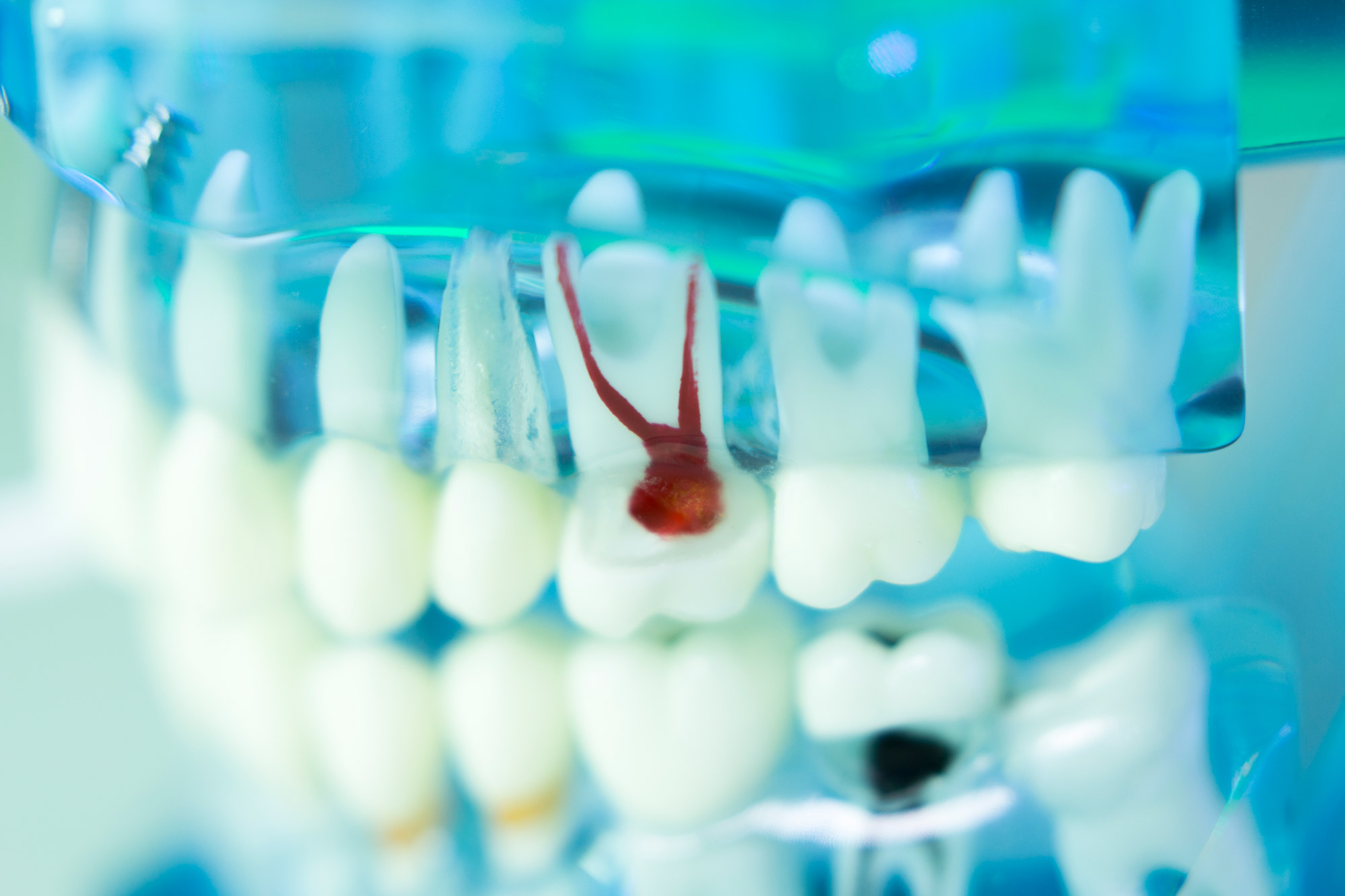What you need to know about Root Canal Treatment
The words “you need root canal treatment” are often accompanied by a sense of dread. It sounds like a long and painful process fraught with terror. The good news is that this reputation is largely undeserved.
Do I need root canal treatment?
If you have a tooth that has been deeply filled or suffered trauma you may eventually need root canal treatment. Root canal treatment is done when a tooth develops an infected nerve. This becomes highly inflamed when infection occurs, causing severe throbbing pain and/or swelling. The pain is persistent, and you may also notice severe sensitivity to cold food and drinks. Sometimes the pain goes away on its own, however this is not a good sign as it often indicates the nerve in that tooth has died. The infection in the nerve causes an abscess in the jaw, which is visible in an x-ray as a dark shadow around the roots of the tooth. This infection will not go away by itself, and will continue to get bigger over time, and can lead to facial swelling. It can however be temporarily treated with antibiotics. When considering root canal treatment, having the tooth extracted is an alternative form of treatment.
How does root canal treatment work?
The purpose of root canal treatment is to clear the infection so that the jawbone can heal. This is achieved by removing the infected nerve. Extracting the tooth would also allow the jaw to heal, however root canal treatment allows you to retain your natural tooth. In root canal treatment the area is also treated with an antibacterial dressing and antibiotics to make sure the infection is fully combated.
What happens during root canal treatment?
Root canal treatment occurs across 2-3 appointments. In your first appointment, the nerve is removed from the tooth. While this sounds scary, the area will be completely numbed first and there is nothing to be concerned about – think of it like a deep filling. Molars usually have 3-4 roots, premolars usually have 2 roots, and incisors usually have 1 root. The more complicated the tooth, the longer it takes to clean. Once the dentist has cleaned out the tooth, the tooth will be hollow. The dentist will fill the canals and tooth with a small amount of antibacterial solution and then the tooth is sealed with a temporary filling
The final stage of root canal treatment involves extra cleaning before filling the hollow insides of the tooth with a root canal filling. A normal white filling in then placed on the tooth to complete the seal. At this point your root canal treatment is complete, and 6 months down the line your dentist will x-ray the area again to check that the tooth has stabilised.
If you intend to keep this tooth for the long-term it may be recommended that you get it crowned. Most teeth are vulnerable to breakage following root canal therapy. We wait 6 months to start the crown as it is important to be sure the tooth has fully stabilised before beginning this process.
Is there anything else I need to know about root canal treatment?
In a perfect world, treatment is straightforward and can be done by your general dentist. However, this isn’t always the case, and your dentist may discover upon x-raying the tooth initially or during the initial stages of treatment that the tooth may require specialist care. In this case, you will be referred to an Endodontist, who is a specialist dentist that specialises in root canal treatment.
Once root canal treatment is completed the expectation is that the infection clears and the tooth is stable long term. However, it is important to realise that root canal treatment can fail. Failure can happen at any point during and after treatment and may present as an untreatable fracture or reinfection. If assessed that the tooth can be redeemed, retreatment may be possible; however, it is likely your dentist will refer you to an Endodontist to have this done. The other option here would be to extract the tooth.
How can I avoid needing root canal treatment?
In most cases, root canal treatment is required as decay has reached the nerve of the tooth, causing the infection. Maintaining good oral hygiene, a healthy diet low in sugar, and drinking plenty of water is the best way to help prevent decay. Unfortunately, once decay starts to occur it is nearly impossible to stop it from growing. Filling treatments and good oral hygiene can help to slow down the growth of decay, but success comes from catching it early. You stand the best chance if you visit your dentist regularly (every 6-12 months) and follow advice given around treatments and home care.
If you play contact sports it is vital that you wear safety headgear including mouthguards, as a blow to the face can also cause a tooth to fracture, requiring root canal treatment. Your dentist will be able to supply you with a custom mouth guard built of much stronger material than those available at sports shops.




